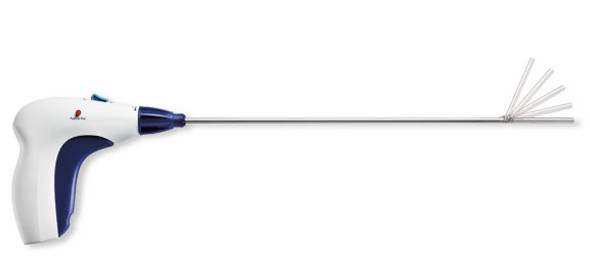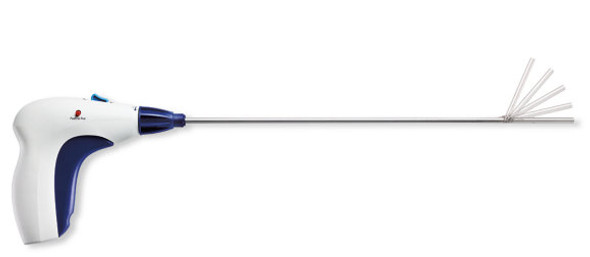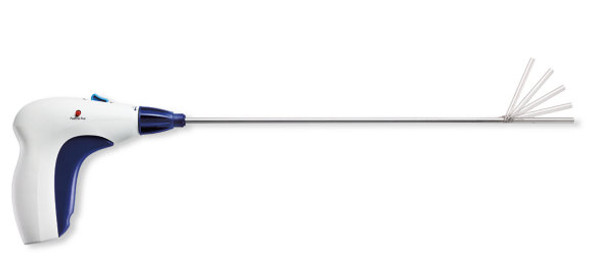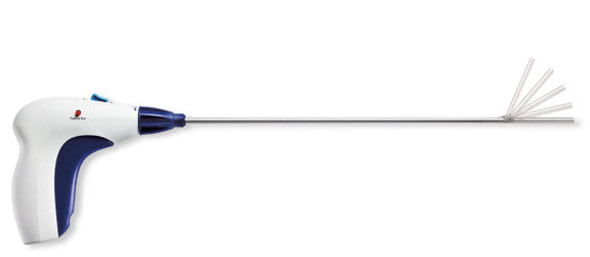Fixation Devices
Fixation Devices play a vital role in modern surgical practices by ensuring stability, alignment, and immobilization of bones, tissues, or surgical implants during the healing process. These devices are integral to orthopedic, trauma, and reconstructive surgeries, where precise anatomical positioning is critical for optimal recovery. Medical professionals rely on them to enhance surgical outcomes, reduce complications, and restore mobility efficiently. Whether used for internal stabilization or external support, fixation devices offer trusted performance for diverse surgical needs.
Why Fixation Devices for Surgical Procedures Are Essential
Fixation devices are essential because they provide the structural support necessary for effective healing post-surgery. In procedures involving fractures, joint reconstruction, or spinal correction, these devices hold anatomical structures in the correct position, minimizing movement and allowing natural healing to occur. They reduce the risk of complications such as misalignment or nonunion and help patients regain function faster.
The right fixation method also reduces the need for secondary surgeries by ensuring stability throughout the recovery phase. Whether through internal methods like plates and screws or external techniques such as frames and pins, these tools are foundational to high-quality surgical care.
What Are Fixation Devices for Surgical Procedures?
Fixation devices are specialized medical tools used during surgical interventions to hold bones, tissues, or implants in place until healing is complete. They may be internal—implanted into the body—or external, supporting the affected area from outside. Constructed from materials such as stainless steel, titanium, or bioresorbable polymers, these devices vary in form and function depending on the surgical application and anatomical site involved.
Fixation devices are engineered for strength, biocompatibility, and precision, making them indispensable in surgeries involving fractures, spinal alignment, or soft tissue repair.
Types of Fixation Devices for Surgical Procedures
1. Bone Plates
Best for: Fracture stabilization and bone reconstruction.
Bone plates are rigid devices fastened to bones using surgical screws to provide internal support. They come in various shapes—straight, contoured, or locking—to match the anatomical structure and fracture type. Locking plates offer additional stability for osteoporotic or comminuted bones.
Key Features:
- High-strength materials like stainless steel or titanium.
- Multiple design configurations for different anatomical sites.
- Compatibility with locking or non-locking screws.
Applications:
- Long bone fractures (e.g., femur, humerus).
- Joint stabilization (e.g., distal radius).
- Reconstructive surgeries in trauma cases.
2. Surgical Screws
Best for: Direct fixation of bone fragments.
Surgical screws are versatile fixation devices used independently or with plates to secure bone fragments. Types include cortical, cancellous, and lag screws, each tailored for specific bone densities and applications.
Key Features:
- Available in various lengths and diameters.
- Thread variations for cortical or cancellous bone.
- Can be used for compression or anchorage.
Applications:
- Bone graft fixation.
- Joint arthrodesis.
- Fracture compression.
3. Intramedullary Nails
Best for: Internal stabilization of long bone fractures.
These long, rod-like devices are inserted into the bone's marrow canal and fixed with locking screws. They provide strong internal support while preserving soft tissue integrity.
Key Features:
- Load-sharing design for faster healing.
- Minimally invasive insertion techniques.
- Radiolucent or metal options.
Applications:
- Femoral and tibial shaft fractures.
- Pediatric fractures.
- Pathological bone fracture stabilization.
4. External Fixators
Best for: Temporary or adjustable fixation in open or complex fractures.
External fixators consist of rods, pins, and clamps positioned outside the body. They're commonly used in trauma or infection cases where internal fixation is risky.
Key Features:
- Adjustable alignment post-surgery.
- Lower infection risk at the fracture site.
- Can be modular or circular in design.
Applications:
- Open fractures.
- Limb lengthening.
- Soft tissue injuries requiring staged repair.
5. Kirschner Wires (K-Wires)
Best for: Temporary fixation in small bones or joints.
K-wires are thin, stainless-steel wires inserted percutaneously or through incisions. They’re often used in hand and foot surgeries or pediatric fracture management.
Key Features:
- Simple to insert and remove.
- Ideal for temporary stabilization.
- Can be used in conjunction with other devices.
Applications:
- Phalangeal or metacarpal fractures.
- Pediatric bone injuries.
- Fixation of small bone fragments.
When to Use Fixation Devices for Surgical Procedures
Fixation devices are used whenever stabilization of anatomical structures is required for healing. They are essential in:
- Acute or chronic bone fractures.
- Spinal deformity corrections.
- Joint fusion or reconstruction.
- Complex trauma with multiple fracture sites.
- Post-tumor resection to restore structural integrity.
How to Use Fixation Devices for Surgical Procedures
Proper use involves surgical planning, precise placement, and postoperative monitoring:
- Preoperative imaging to determine fracture type and device selection.
- Sterile preparation and incision for internal or external access.
- Placement of fixation device, ensuring proper anatomical alignment.
- Securing the device with screws, wires, or pins.
- Postoperative assessment through imaging and mobility protocols.
Key Features of Fixation Devices for Surgical Procedures
- High Biocompatibility: Made from materials that minimize immune response and integrate well with body tissues.
- Structural Stability: Designed to withstand mechanical stress during healing.
- Precision Engineering: Tailored to anatomical contours and specific surgical needs.
- Versatile Designs: Options for internal or external application.
- Radiolucency (optional): Some devices allow clear post-op imaging.
Benefits of Fixation Devices for Surgical Procedures
Fixation devices offer numerous benefits that significantly improve surgical outcomes. They:
- Enhance Healing Rates: By keeping bones and tissues stable, these devices promote faster and more predictable healing.
- Reduce Complications: Proper stabilization lowers the risk of malunion, nonunion, or post-surgical deformities.
- Minimize Need for Reoperation: Reliable fixation often eliminates the need for corrective surgeries.
- Support Functional Recovery: Allow early mobilization, which is crucial for long-term joint function and strength.
- Adapt to Various Surgeries: From trauma to elective orthopedic reconstruction, these devices fit a broad range of surgical applications.
How to Choose the Right Fixation Devices for Surgical Procedures
Choosing the right fixation device depends on:
- Type of Injury: Use bone plates or screws for clean fractures; external fixators for open or unstable injuries.
- Anatomical Location: Smaller devices for hands/feet, load-bearing devices for femur or tibia.
- Patient Factors: Age, bone density, and overall health may dictate material type or device design.
- Surgical Goals: Consider whether long-term implantation or temporary fixation is required.
- Infection Risk: In high-risk cases, opt for external fixators or antimicrobial-coated devices.
Frequently Asked Questions (FAQs)
Q1: Are fixation devices permanent?
Some are permanent, while others are removed after healing, depending on the device type and surgical protocol.
Q2: What materials are commonly used in fixation devices?
Most are made from stainless steel, titanium, or bioresorbable polymers.
Q3: Do fixation devices cause allergic reactions?
Rarely. Titanium is hypoallergenic, and most materials are highly biocompatible.
Q4: Can fixation devices be used in children?
Yes, especially in pediatric trauma, using appropriately sized and growth-sensitive devices.
Q5: How long does recovery take after implantation?
Recovery varies by injury type but generally spans weeks to several months, with follow-up imaging required.
Q6: Are fixation devices MRI-compatible?
Most modern devices are MRI-safe, especially those made from titanium.
Q7: Can external fixators be adjusted post-surgery?
Yes, many are designed for gradual adjustments during recovery.
Q8: Is removal of internal fixation devices necessary?
Only if they cause discomfort, infection, or interfere with function—many remain in place permanently.
Related Products
- Orthopedic Power Tools: Streamline the insertion of screws, wires, and nails with precision. Explore Orthopedic Power Tools
- Surgical Drills & Saws: Essential for preparing bone surfaces before fixation. Browse Surgical Drills
- Wound Closure Devices: Complement fixation with reliable sutures or staples. See Wound Closure Options
- Bone Grafts & Substitutes: Used alongside fixation devices to promote bone regeneration. View Bone Graft Products
Explore our wide selection of fixation devices to ensure the highest standards in surgical precision, patient safety, and healing outcomes. Whether you're addressing trauma, deformities, or complex reconstructions, MedicalEx offers the trusted tools professionals rely on.
-

ReliaTack Reload – Articulating Fixation Device with 10 Absorbable Tacks for Laparoscopic Hernia Repair
Medtronic
$1,999.45The ReliaTack Articulating Reloadable Fixation Device is designed for precise mesh fixation in laparoscopic and open hernia repair procedures. This sterile, single-use device includes a reload preloaded with 10 standard purchase absorbable tacks and is...- SKU:
- RELTACK10RSW
$1,999.45 -

ReliaTack Articulating Reloadable Fixation Device – 30 Standard Purchase Absorbable Tacks for Hernia Repair
Medtronic
$7,166.95The ReliaTack Articulating Reloadable Fixation Device is designed for secure mesh fixation in minimally invasive and open hernia repair procedures. This sterile, single-use system includes 30 standard purchase absorbable tacks preloaded into dedicated...- SKU:
- RELTACK3X10SW
$7,166.95 -

ReliaTack Articulating Reloadable Fixation Device – 3x8 & 1x5 Absorbable Tacks for Laparoscopic Hernia Repair
Medtronic
$7,233.45The ReliaTack Articulating Reloadable Fixation Device enhances laparoscopic and open hernia repair with consistent mesh fixation and controlled access in challenging anatomical areas. Designed for use with included reloads, it supports surgical precision...- SKU:
- RELTACK4XDPTSW
$7,233.45 -

ReliaTack 5-Tack Reload – Deep Purchase Absorbable Tacks for Hernia Mesh Fixation
Medtronic
$1,294.15The ReliaTack 5-Tack Deep Purchase Reload delivers precise, secure mesh fixation in minimally invasive and open hernia repairs. Designed for use with the ReliaTack articulating reloadable fixation device, each reload contains five sterile, absorbable...- SKU:
- RELTACK5RDPTSW
$1,294.15 -

ReliaTack 8-Tack Reload – Deep Purchase Absorbable Fixation for Hernia Mesh Repair
Medtronic
$1,978.00The ReliaTack 8-Tack Deep Purchase Reload supports targeted, secure fixation of mesh to soft tissue in both minimally invasive and open hernia repairs. Designed for use with the ReliaTack™ articulating reloadable fixation device, it provides eight...- SKU:
- RELTACK8RDPTSW
$1,978.00 -

ReliaTack Fixation Device – Articulating & Absorbable for Mesh Placement in Hernia Repair
Medtronic
$1,195.27The ReliaTack Articulating Reloadable Fixation Device supports secure and controlled mesh fixation in minimally invasive and open hernia repair. Featuring a 65° articulating shaft and reloadable mechanism with five standard-use absorbable tacks, this...- SKU:
- RELTACK5RSW
$1,195.27
